Owning a dog is a rewarding experience for any family, but when children are involved, there are additional factors to consider. A dog can provide companionship, teach responsibility, and bring joy into a household, but they also require time, attention, and care. This raises the question for many parents: Should families with children own a dog? In this article, we will explore the benefits, challenges, and considerations involved in adding a canine companion to a family with kids.
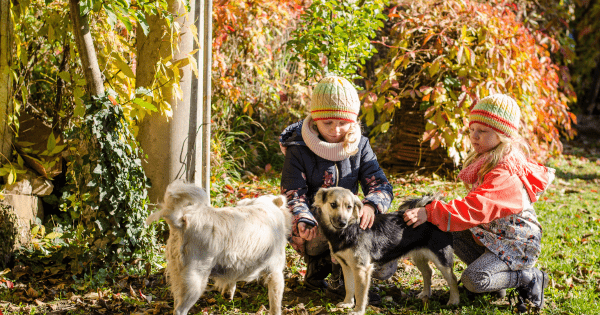
1. Benefits of Having a Dog in a Family with Children
Dogs can have a profound impact on children’s development and family dynamics. Here are some key benefits to consider:
1.1. Teaching Responsibility
Owning a dog teaches children about responsibility. Daily tasks such as feeding, walking, and grooming a pet help kids learn the importance of caring for another living being. This can instill a sense of duty and discipline in children from a young age, helping them grow into responsible adults.
1.2. Providing Emotional Support
Dogs are known for their unconditional love and companionship, making them great emotional support animals for children. They provide comfort during tough times and can help children feel less lonely. Dogs are sensitive to human emotions and often respond with affection, offering emotional stability to children who may be going through challenges.
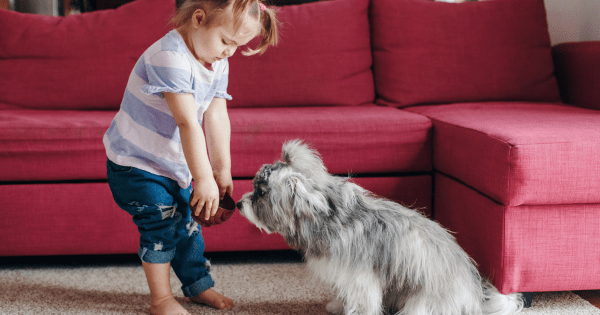
1.3. Encouraging Physical Activity
In today’s digital age, many children spend hours in front of screens, which can lead to a sedentary lifestyle. Dogs, especially energetic breeds, require regular exercise, which encourages children to engage in outdoor activities. Whether it’s walking, running, or playing fetch in the yard, owning a dog naturally promotes physical fitness and a healthy lifestyle for the whole family.
1.4. Enhancing Social Skills
Children who grow up with dogs often develop stronger social skills. Dogs help break the ice in social situations and can even teach children about empathy and compassion. For shy or introverted kids, having a dog can boost their confidence and improve their ability to communicate and interact with others.
1.5. Building Family Bonds
Caring for a dog can bring the whole family together. Walking the dog, playing games, or even just sitting together and petting the dog fosters quality family time. The shared responsibility of caring for a dog helps build stronger family bonds and creates lasting memories.
2. Challenges to Consider When Owning a Dog with Children
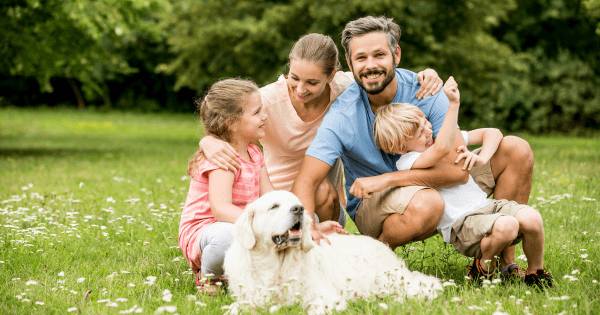
While the benefits of owning a dog are significant, there are also challenges that families with children must consider before bringing a dog into their home.
2.1. Time Commitment
Dogs require a significant amount of time and attention. Between feeding, grooming, exercise, and training, caring for a dog can feel like a full-time job, especially for families with young children. It’s essential to consider whether your family has the time and energy to devote to a dog’s needs while balancing the demands of raising children.
2.2. Training and Behavioral Issues
Not all dogs are naturally well-behaved around children. Puppies, in particular, may be prone to biting, jumping, or excessive barking, which can be overwhelming for young kids. Proper training is essential to ensure the dog is well-mannered and safe around children. This may require hiring a professional trainer or attending obedience classes, which can add to the time and cost commitment.
2.3. Allergies and Health Concerns
Some children may be allergic to dogs, which can cause respiratory issues, skin irritation, or other health problems. It’s crucial to determine whether any family members have pet allergies before bringing a dog into the home. Regular grooming and cleaning can help reduce the presence of allergens, but families should consult with a pediatrician or allergist if allergies are a concern.
2.4. Financial Costs
Owning a dog comes with ongoing expenses such as food, veterinary care, grooming, and supplies. For families with children, budgeting for a dog’s needs alongside other household expenses can be a challenge. Before adopting a dog, it’s essential to consider the financial commitment and ensure your family is prepared for the associated costs.
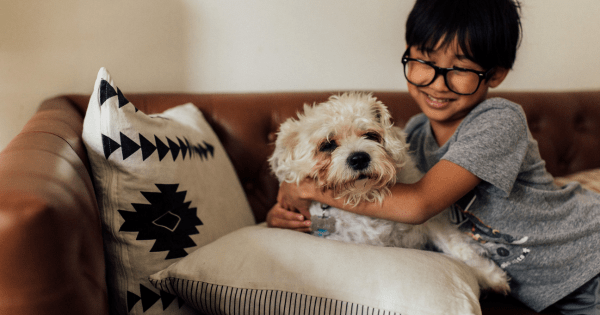
3. Choosing the Right Dog for a Family with Children
If your family decides that owning a dog is the right choice, the next step is selecting the right breed or individual dog that fits your household. Not all dogs are ideal for homes with young children, so it’s important to research and choose wisely.
3.1. Consider the Dog’s Size and Temperament
While large dogs may be gentle giants, they can accidentally knock over small children due to their size. Smaller dogs, on the other hand, may be more fragile and less tolerant of rough handling from kids. The temperament of the dog is more important than size—look for breeds known for their patience, gentleness, and tolerance around children. Some of the best dog breeds for families with children include:
- Golden Retrievers: Friendly, patient, and tolerant, making them excellent companions for kids.
- Labrador Retrievers: Energetic and loyal, Labs are known for their playful and affectionate nature.
- Beagles: Small and sociable, Beagles love being part of a family and enjoy playing with children.
- Cavalier King Charles Spaniels: Gentle and affectionate, they make wonderful lap dogs for families with kids.
- Boxers: Playful and protective, Boxers are known for their loyalty and love for children.
3.2. Adoption vs. Buying from a Breeder
When looking for a family dog, consider whether you want to adopt from a shelter or buy from a breeder. Adopting from a shelter can be a rewarding experience, and many shelters have dogs that are already socialized and trained. However, if you have specific breed preferences or need a dog with a particular temperament, buying from a reputable breeder may be the best option.
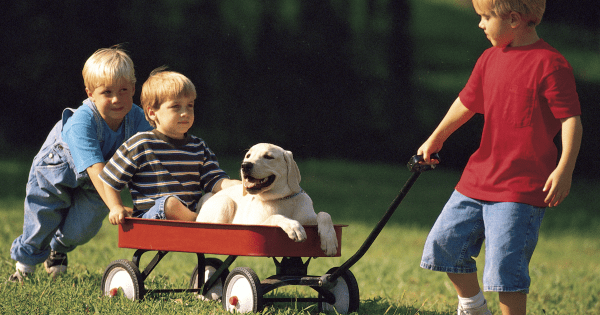
3.3. Age of the Dog
While puppies are adorable, they require a lot of time and training, which can be challenging for families with young children. In contrast, adult dogs may already be house-trained and more settled in their behavior, making them a better fit for families. Older dogs may also have a calmer temperament, which can be beneficial for families with toddlers or babies.
4. Preparing the Household for a Dog
Once you’ve selected the right dog for your family, the next step is preparing your home. Here are some tips to ensure a smooth transition:
4.1. Child and Dog Safety
Teach your children how to properly interact with the new dog. This includes showing them how to pet the dog gently, avoid pulling ears or tails, and understanding when the dog needs space. Supervise all interactions between young children and dogs to prevent accidents.
4.2. Creating a Space for the Dog
Designate a comfortable space in your home for the dog. This could be a crate, bed, or a quiet corner where the dog can retreat when they need rest. Make sure your dog has easy access to water, and establish a feeding area away from where children play to avoid interruptions during meals.
4.3. Establishing Routines
Dogs thrive on routine, so establish a consistent schedule for feeding, walking, and playtime. Involve the children in these routines to help them bond with the dog and learn about responsibility.
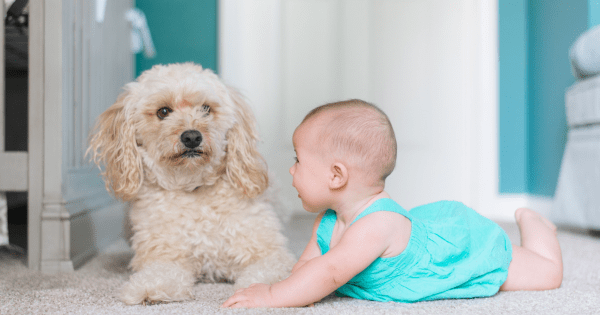
5. Conclusion: Is a Dog Right for Your Family?
Deciding whether or not to own a dog when you have children is a big decision. While the benefits are immense—offering companionship, teaching responsibility, and promoting physical activity—there are also challenges like time commitment, costs, and potential safety concerns. However, with careful planning, choosing the right dog, and establishing a family routine that includes the dog, the rewards can far outweigh the challenges. If your family is prepared for the responsibility, owning a dog can enrich your children’s lives and create lasting memories for years to come.
READ NEXT: 19 Dog Breeds That Shed the Most Hair You May Not Know